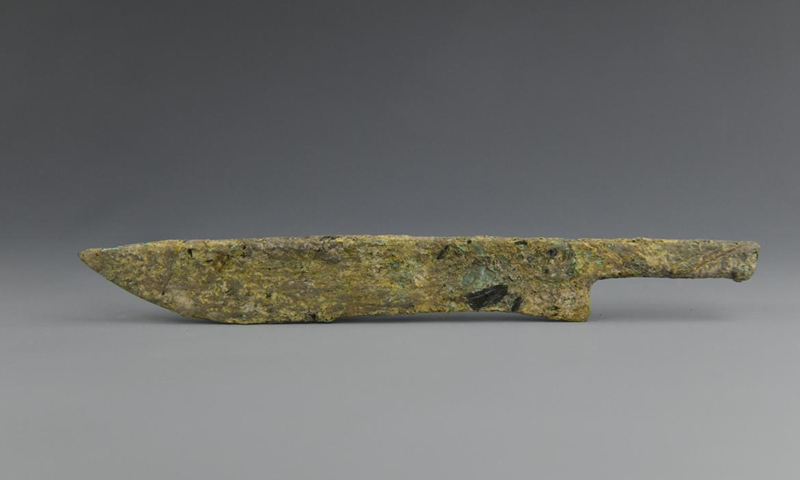
A bronze knife found in the site Photo: Courtesy of Nanjing Normal University
A recent archaeological seminar in East China's Anhui Province revealed that the Shenduntou site,
mk a typical Zhou Dynasty (1046BC-256BC) copper smelting site in the lower Yangtze River region, was part of the early Wu Kingdom's official industrial system. Wang Zhigao, the lead archaeologist of the Shenduntou excavation team, told the Global Times on Tuesday that the site is of great significance for the study of the development of bronze civilization in the Yangtze River basin.
"Various bronze tools and weapons produced at the site were likely transported via the Yangtze River and distributed to other regions, possibly used in wars such as the Wu-Yue conflict during the Spring and Autumn period (770BC-476BC)," Wang noted.
According to Wang, the excavation area covers approximately 800 square meters, with the core area having a concave shape. A total of 105 features were discovered, including red-burned earth, furnaces and other remains, along with 603 relics, including clay molds and bronze knives, which are associated with copper smelting activities.
Based on the types of clay molds and bronze items unearthed, the workshop area primarily produced bronze tools like knives and axes, as well as weapons such as swords and arrowheads, he shared.
Mining, smelting and casting were the three key stages of ancient metallurgy. While more than 100 mining and smelting sites from the Shang and Zhou dynasties have been discovered in the Ningzhen-Wan area, large-scale excavations are rare. The Shenduntou site provides valuable material evidence for the study of Wu Kingdom's system of mining, smelting, and casting, according to the Xinhuanet.
The excavation work, which began in August 2024, was supported by the National Cultural Heritage Administration.
Xu Liang, the Shenduntou site director, explained that the discovered wall remains encircle the edges of the mound platform. The wall's eastern, western and southern sections were unearthed, totaling a length of 75.5 meters.
Based on the stratigraphy and the characteristics of the unearthed artifacts, the excavation of the Shenduntou site can be divided into three phases, Xu said. The first phase shows fewer remains, primarily household items such as ceramic tripods and stone tools.
The second phase represents the peak period of the site. During this time defensive earth walls and ditches were constructed around the edge of the terrace, and many artifacts related to copper smelting were discovered inside the walls, indicating that this was a high-level bronze workshop area, producing tools and weapons such as knives, axes and swords, he said. The third phase is the decline phase, during the late Spring and Autumn period, when copper-related remains and artifacts significantly diminished, likely due to the fall of the Wu Kingdom.
According to Wang, a small river to the north of the Shenduntou site connects to the local main river, the Zhanghe River, which is also a major tributary of the Yangtze River. Therefore, the bronze tools and weapons produced at the Shenduntou site were likely transported via the Yangtze River system to other regions, possibly used in the wars of the Wu and Yue kingdoms during the Spring and Autumn period.
The discovery of the Shenduntou site provides valuable archaeological evidence for the bronze civilization of the lower Yangtze region, particularly the economic, cultural, and military developments of the Wu Kingdom, experts said.

